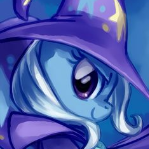general media Traditional art in a digital world
-
Similar Content
-
- 3 replies
- 487 views
-
shop open Gorgans Digital Art Commissions
By Gorgan,
- 10 replies
- 1,945 views
-
- 18 replies
- 1,400 views
-
shop open Valtasar's Digital Art Commissions 1 2 3
By Lord Valtasar,
- 61 replies
- 13,771 views
-
interview World Premiere - Digital Circus Interview with Jonny Music
By Jonny Music,
- digital circus
- jonny music
- (and 5 more)
- 0 comments
- 260 views
-
-
Recently Browsing 0 members
- No registered users viewing this page.





.thumb.png.83e037ba7e453fda3377d3d6caa2743d.png)

ProfilePic.thumb.png.650945be00fc68141f0aebb9e8d6a019.png)
Recommended Posts
Create an account or sign in to comment
You need to be a member in order to leave a comment
Create an account
Sign up for a new account in our community. It's easy!
Join the herd!Sign in
Already have an account? Sign in here.
Sign In Now